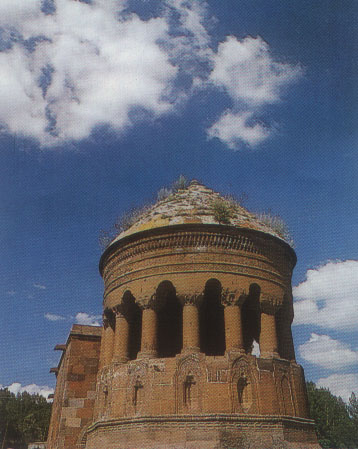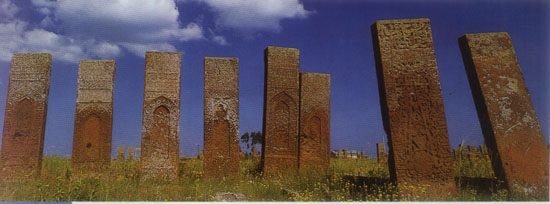| South - Eastern Anatolia Region... |
|
Here is the geographically smallest region of Türkiye: the Southeastern Anatolian Region, certainly not that small with
respect to natural and historical beauties it possesses. This region of ancient cities, is adorned by attractive natural
figures, constituting a real mixture of sights and past combined with originality. Situated on the broad plain of upper
Mesopotamia, Sanliurfa is one of these points, once being a city of 1001 nights and camel caravans. Then comes Diyarbakir
with its wonderful architectural designs dates back to the Middle Ages. Here is the Malabadi Bridge presenting a peaceful
view, besides the Dicle Bridge over the Tigris (Dicle) river. Another famous river, the Euphrates (Firat), flows through
Harran, a wonderful place to see with its ancient city walls and castle. Throughout this region a special atmosphere
exists, one uniquely different from other parts of the country. Thus, reflecting a specific life style over its land,
Southeastern Anatolia offers a wide variety of opportunities for its visitors. If you especially want to escape from a
"sun - sea - sand" holiday, you should explore this region and live out of ordinary days in very distinguished
places. Gölbasi is the area which includes the pools of the sacred carp, the Rizvaniye and Abdurrahman mosques and the
surrounding park. The name means "at the lake - side", and while the pools hardly constitute a lake, it is easy for Urfa's
citizens to amplify the size of these cool, refreshing places in their minds. On the northern side of the pool, called the
"Balikli Göl", is the "Rizvaniye Camii and Medresesi". Legend had it that Abraham, who is a great prophet in Islamic
belief, was in old Urfa destroying pagan gods one day when Nimrod, the local Assyrian king, took offence at this rash
behaviour. Nimrod had Abraham immolated on a funeral pyre, but God turned the fire into water (the pool) and the burning
coals into fish (the carp). You can sip the sacred water from a subterranean spring within the mosque. The two pools,
this one and the nearby Ayn-i Zeliha, are fed by a spring at the base of Damlacik hill, on which the kale is built. Local
legend - makers have had a field day with the fish in the pool, deciding that they are sacred to Abraham and must not be
caught lest the catcher go blind. You can buy food for the fish from vendors at the poolside, even though signs say :
"In the interests of the fishes' health, it is requested that they not be fed." The signs ignore the fact that people
will do it for their own enjoyment, not to nourish the fish.
|
|

|









